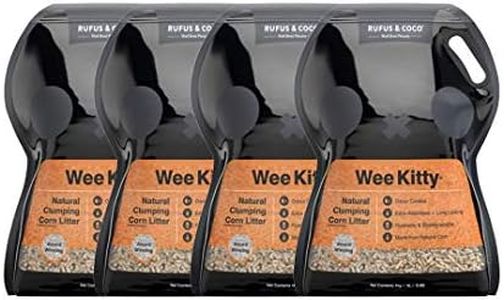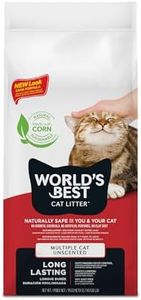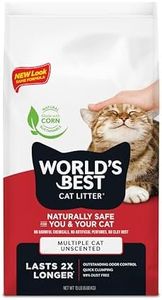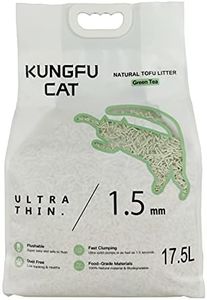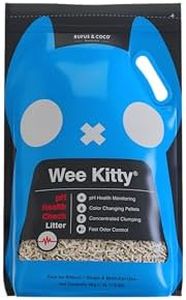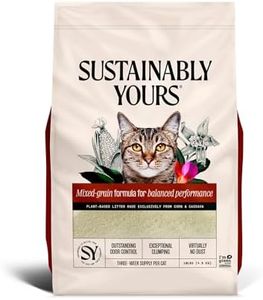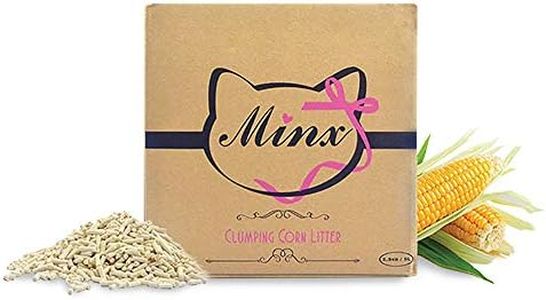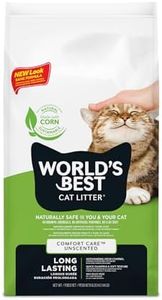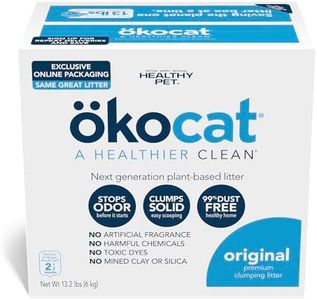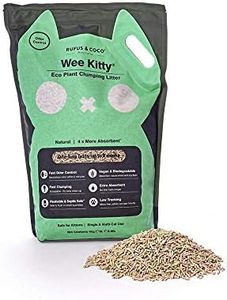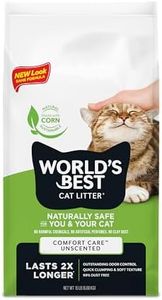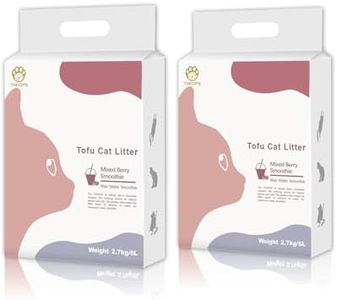We Use CookiesWe use cookies to enhance the security, performance,
functionality and for analytical and promotional activities. By continuing to browse this site you
are agreeing to our privacy policy
10 Best Flushable Cat Litters
From leading brands and best sellers available on the web.By clicking on a link to a third party's website, log data is shared with that third party.
Buying Guide for the Best Flushable Cat Litters
Choosing the right flushable cat litter can make life more convenient and your home cleaner, all while being kind to the environment. Flushable litters are typically made from biodegradable materials and are designed so you can safely flush used litter down the toilet, but it’s important to ensure your plumbing can handle this and to follow any local regulations. Knowing the key features to consider will help you find the best fit for your cat and your home.Material TypeThe material of flushable cat litter is crucial because it affects performance, safety, and environmental impact. Common materials include corn, wheat, wood, paper, and even coconut husk. Softer materials like corn and wheat tend to be gentle on cats’ paws and often clump well, while wood and paper are dust-free and biodegradable. If your cat has sensitivities or allergies, choosing a hypoallergenic or unscented material may help. Think about your cat’s preference as well as any sensitivities in your household.
Clumping AbilityClumping ability means how well the litter can form solid clumps when wet. Good clumping makes scooping waste easier and helps control odors. Some flushable litters clump as well as traditional ones, while others form looser clumps or absorb liquid without clumping much at all. If you want ease of cleaning, look for litters listed as ‘quick clumping’ or ‘tight clumping.’ For multiple cats or high-traffic litter boxes, strong clumping is extra useful.
Flushability and Septic SafetyFlushability refers to how safe and effective the litter is when disposed of via the toilet. While most flushable brands are designed to break down in water, not all are equally gentle on plumbing or septic systems. Check that the litter is labeled as safe for both sewer and septic tanks, and always follow disposal instructions. If your plumbing is older or you have a sensitive septic tank, test with small amounts and consult with a plumber if in doubt.
Odor ControlOdor control tells you how well the litter can manage smells between cleanings. Some flushable litters naturally reduce odors with plant enzymes or baking soda, while others may add fragrance. If your home needs stronger odor control, choose a litter that highlights this feature, but remember some cats dislike artificial fragrances, especially if they have allergies or sensitivities.
Dust and TrackingDust and tracking are about cleanliness. Low-dust formulas are best if you or your cat have allergies, while low-tracking litters minimize the amount that sticks to paws and ends up outside the litter box. Materials like large-grain corn or denser wood pellets generally produce less mess, making cleanup easier and keeping your floors tidier. Consider your tolerance for mess and your cleaning preferences when choosing.
BiodegradabilityBiodegradability means the litter breaks down naturally and returns safely to the environment. This is important for anyone looking to reduce their ecological footprint. Most flushable litter options are biodegradable, but rates vary: corn and wheat tend to break down quickly, while some wood or paper formulas may decompose more slowly. If reducing waste is high on your priority list, double-check how ‘green’ the litter really is.
